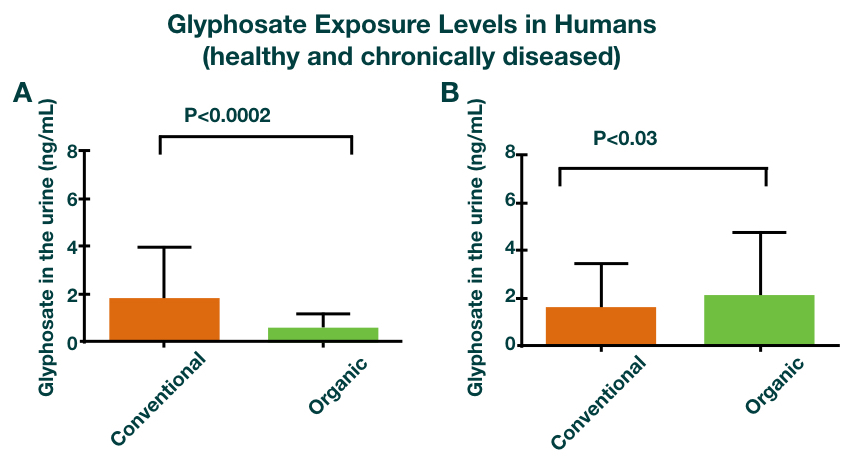Towards the end of the 19th Century Ireland’s vast potato fields became infected by an invasive fungal disease and caused the death of one million people. Another two million were forced to leave the country.
We avoid such agricultural catastrophes today with the help of pesticides, a range of synthetic and natural chemicals that control insects, weeds, funguses and bacteria that have that ability to threaten global food security. Now an essential part of our food production system, breakthroughs in synthetic crop care enabled us to sustain our growing populations with increased efficiency and at a lower cost. Only now are we discovering how food and global health has become more vulnerable as a result.
Every year we apply over 5 billion pounds of pesticides and herbicides across the Earth. Glyphosate, the active ingredient in Monsanto’s Roundup, is the most widely used synthetic herbicide in modern agricultural production. With 440 million acres (178 million hectares) of farmland around the world treated with the synthetic agrochemical today, significant traces of the compound are being found in several consumer products, the environment and even our own bodies.
 Source: Food Democracy Now!
Source: Food Democracy Now!
Glyphosate Food Testing Results
(in parts per billion – ppb)
 *These samples exhibit very low recovery and/or response. The above amounts found are rough estimates at best and may not represent an accurate representation of the sample.
*These samples exhibit very low recovery and/or response. The above amounts found are rough estimates at best and may not represent an accurate representation of the sample.
Source: Food Democracy Now!
 Source: Food Democracy Now!
Source: Food Democracy Now!
The need for alternative solutions for crop protection has never been greater. With each new breakthrough for synthetic agrochemicals we have encountered the same problem – rapid pest evolution. Resistance is passed along to the next generation of pests and creates super pests such the Colorado potato beetle, which is resistant to over 50 different species and counting. While synthetic pesticides have improved over time and are increasingly regulated by environmental agencies worldwide, they still have the massive potential to pollute soil, water, reduce wildlife and harm global health.
This is why modern crop care must balance the demands of food production with environmental and health concerns. Nature is the greatest solution in this regard, offering a variety of alternatives such as plant-based chemicals that serve the same purpose as their synthetic counterparts without causing any damage. We must opt for natural solutions that combine biological understanding, environmental awareness and improved technology in order to drive the New Green Revolution.
Neem is one fine solution.